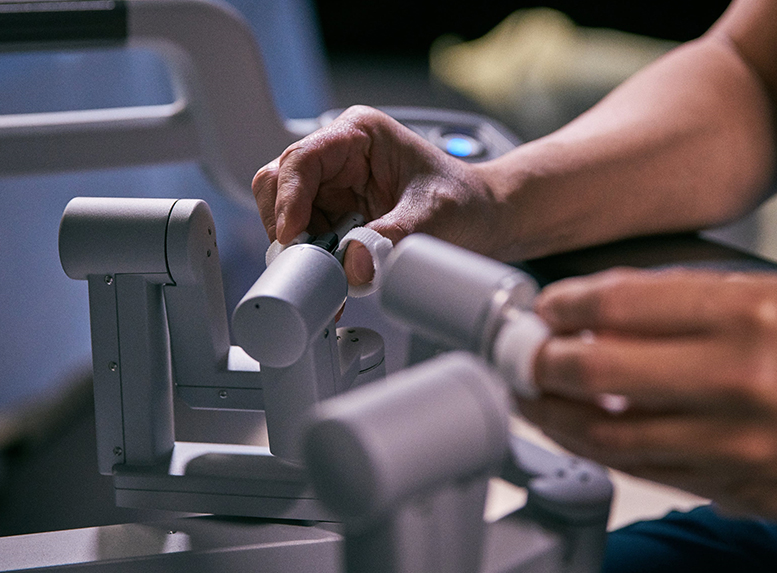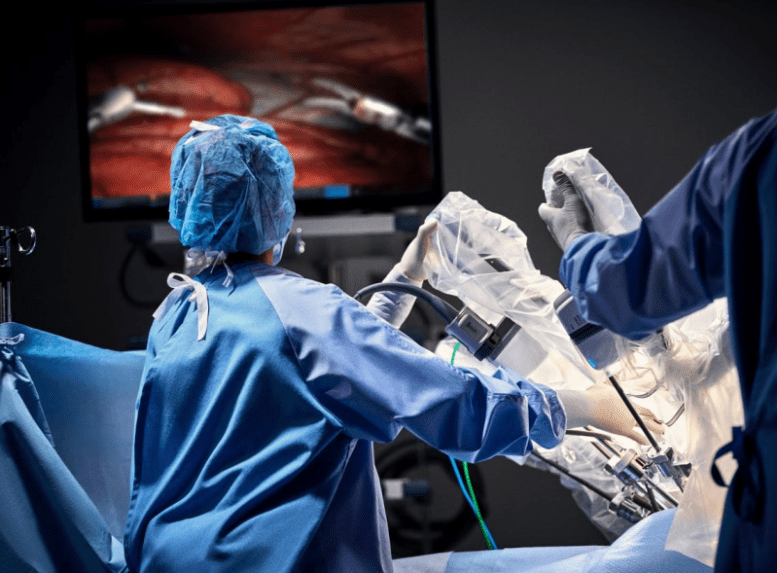+27 (012) 940 8278
drventer@urospes.co.za
Suite M31, Third Floor
Netcare Pretoria-East Hospital
C/O Garsfontein and Netcare Road
Moreletapark, Pretoria, 0181
South Africa
Practice Number: 0478563
Robotic Surgery is a type of minimally invasive surgery that enables us to perform complicated surgery through multiple small incisions or access areas. Instead of operating on patients through large incisions, specialized miniature instruments are used that fits through a series of 5 – 12mm port incisions. These miniature instruments are mounted on three separate robotic arms that allows for maximum range of motion and precision. The fourth arm has a special 3D HD camera mounted on it.
The surgeon controls these instruments and camera from a console in the operating room. His fingers are placed in master controls that give him the ability to move and operate each instrument with absolute precision. Vision is of upmost importance and the surgeon looks at the operating field through a stereoscopic high definition monitor that gives a magnified high definition 3D view. This is a much better view of the operating field than the human eye can provide.
These advantages provides the surgeon with much better control and vision of the operating field enabling him to operate with absolute precision, which is necessary for nerve sparing and ultimate continence and potency retention.



Another advantage of robotic prostatectomy is the improved ability to preserve the erectile nerves. During an open prostatectomy the nerves that provide erection are hidden behind the prostate. The approach taken using the surgical robot, enters the abdomen and the robotic arms are positioned posterior to the prostate with the nerves directly in front of the robotic/laparoscopic camera. In this way, the nerves maybe preserved, primarily because the anatomy can be seen more clearly compared to open surgery.
Less Scarring
Instead of having a large abdominal surgical scar, minimally invasive surgery provides access for surgery through a number of small incisoins- ultimately resulting in less scarring.
Shorter Hospital Stay
With smaller incisions the post-operative pain is less. This results in a shorter hospital stay and aN earlier return to work and normal daily activity.
Postoperative Catheterization
The catheter is typically removed 2 to 3 weeks after open surgery. After Robotic surgery the catheter is removed after 3 to 7 days.
Decreased Blood Loss
During open surgery typical blood loss ranges from 600ml to 1000ml. With Robotic surgery, as for Laparoscopic surgery the amount of blood loss is significantly reduced to about 200ml. This reduces the risk of having a blood transfusion during or after surgery.
For more information on the Da Vinci Si system and Robotic Assisted Prostatectomy click on the button below.
+27 (012) 940 8278
drventer@urospes.co.za
Suite M31, Third Floor
Netcare Pretoria-East Hospital
C/O Garsfontein and Netcare Road
Moreletapark, Pretoria, 0181
South Africa
Practice Number: 0478563